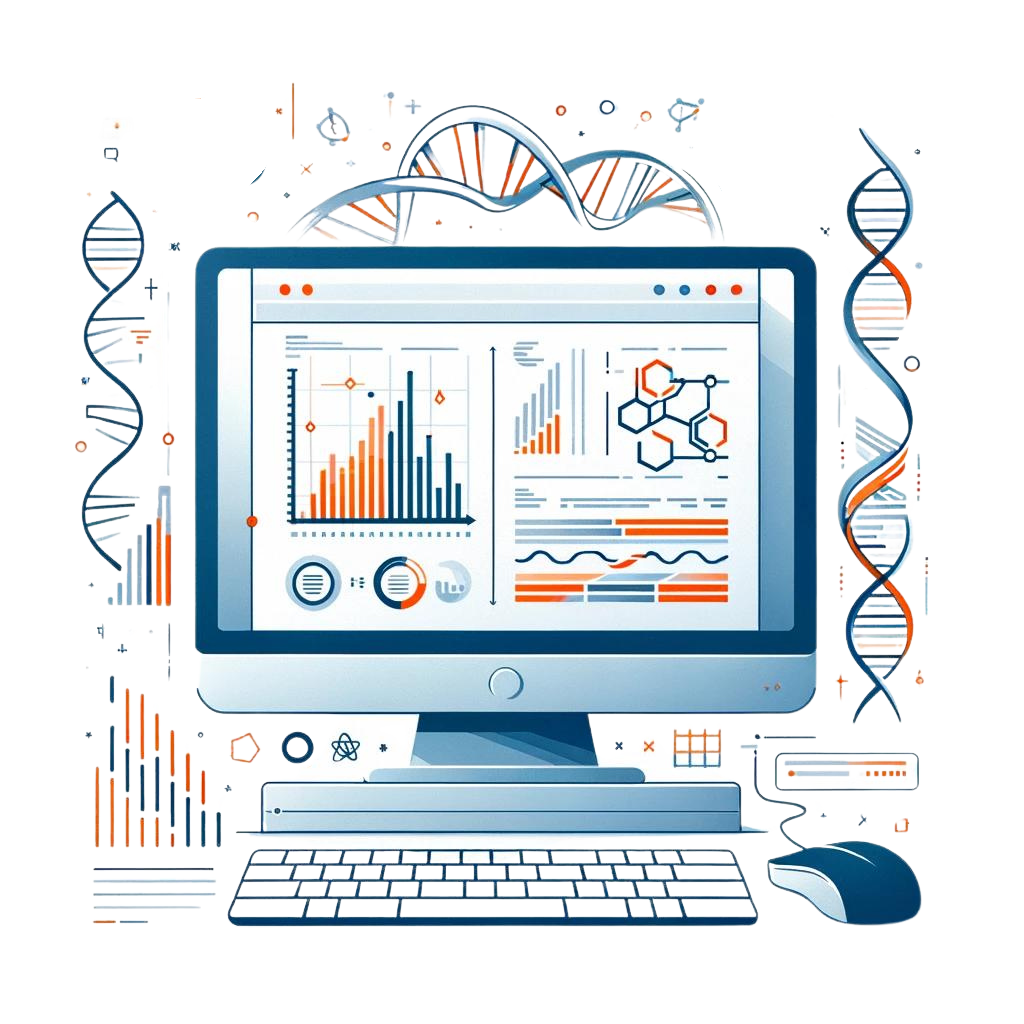
Discover endless possibilities with our comprehensive short courses, guiding you to excellence.
Technologies You Will Learn
OUR COURSES
Empower Your Future with Expert-Led, Flexible, and Affordable Courses

Computer Aided Drug Designing
Computer-Aided Drug Designing (CADD) is a cutting-edge approach that leverages computational tools to expedite and enhance the drug discovery process. This innovative method uses computer simulations to predict how new drug molecules will interact with biological targets, significantly reducing the time and cost involved in developing new therapeutics.
What You Learn?
- Toxin Protein Selection
- Structure Prediction and Validation
- Physicochemical Properties Prediction
- Drug Candidates Screening
- Molecular Docking
- Pharmacokinetics and Half-Life Prediction
- Molecular Dynamic Simulation

Image Analysis Using Python Programming
Image analysis using Python is a powerful technique that leverages the versatility of Python libraries like OpenCV, Pillow, and scikit-image to process, analyze, and manipulate images efficiently. By utilizing these tools, developers can perform tasks such as object detection, image segmentation, and feature extraction, enabling applications in various fields, including medical imaging, surveillance, and machine learning.�
What You Learn?
Unlock the power of Python programming for image analysis with our comprehensive course. Designed for beginners and advanced users alike, this course delves into the essential techniques and tools needed to process, analyze, and visualize images using Python. This course covers the following key topics:
- Foundations of Image Analysis
- Python Libraries for Image Processing
- Feature Extraction and Object Detection
- Image Segmentation
- Machine Learning Integration
- Practical Projects

Cancer Prognosis Using Machine Learning
Cancer prognosis using machine learning represents a groundbreaking approach in the medical field, enhancing the accuracy and efficiency of predicting cancer outcomes. By employing advanced algorithms and techniques such as deep learning, random forests, and support vector machines, machine learning models can analyze vast datasets, including patient demographics, genetic information, and clinical records.�
What You Learn?
- Next-Generation Sequencing (NGS) reads retrieval from NCBI
- Data wrangling and arrangement
- DNA feature finding
- Mutation detection
- Match and mismatch analysis
- Implementing machine learning models
- Model validation

Computer Aided Vaccine Designing
Computer-Aided Vaccine Designing is a cutting-edge approach that leverages computational tools to expedite and enhance the vaccine designing process. This innovative method uses computer simulations to predict how new vaccine molecules will interact with biological targets, significantly reducing the time and cost involved in developing new vaccines.
What You Learn?
- Epitope prediction & selection
- Vaccine candidate design
- Molecular docking
- Immunoinformatics analysis
- Structural modeling
- Allergenicity and toxicity prediction
- In silico cloning and expression
- Back translation

Academic and Scientific Writing
Academic and scientific writing is a formal style of writing used to communicate complex ideas, research findings, and scholarly arguments clearly and precisely. It emphasizes clarity, precision, and objectivity, often following specific formatting and citation guidelines. This type of writing is characterized by its structured approach, including an introduction, methodology, results, and discussion sections, and is commonly used in academic journals, research papers, theses, and dissertations to contribute to the body of knowledge in a particular field
What You Learn?
- Structure and organization of research papers
- Formulating research questions and hypotheses
- Writing clear and concise abstracts and introductions
- Data presentation and interpretation
- Ethical considerations and avoiding plagiarism
- Formatting and adhering to style guides (e.g., APA, MLA, Chicago)

Basic to Advance Python Programming
Python programming is an essential skill for modern developers, known for its simplicity, readability, and versatility. As an open-source, high-level language, Python is widely used in web development, data analysis, artificial intelligence, and more. Its intuitive syntax and extensive libraries make it ideal for both beginners and experienced programmers looking to streamline their workflow and enhance productivity.�
What You Learn?
- Python syntax and basics
- Data types and variables
- Control flow statements
- Functions and modules
- File handling
- Error handling and exceptions
- Libraries & Models
Experience
Gain hands-on experience through practical exercises and real-world projects, enhancing your skills and preparing you for industry challenges.
Education
Receive quality education from experienced instructors, covering the latest trends and knowledge in your field, ensuring comprehensive learning.
Certificate
Earn a recognized certificate upon course completion, validating your expertise and boosting your professional credentials and career prospects.
